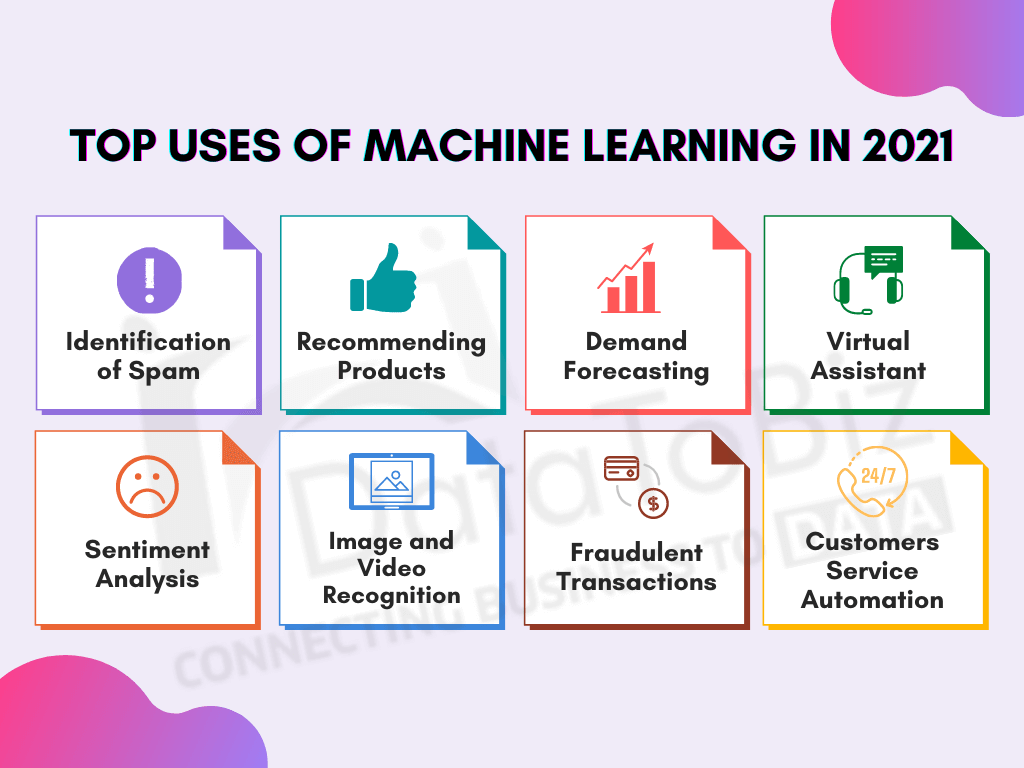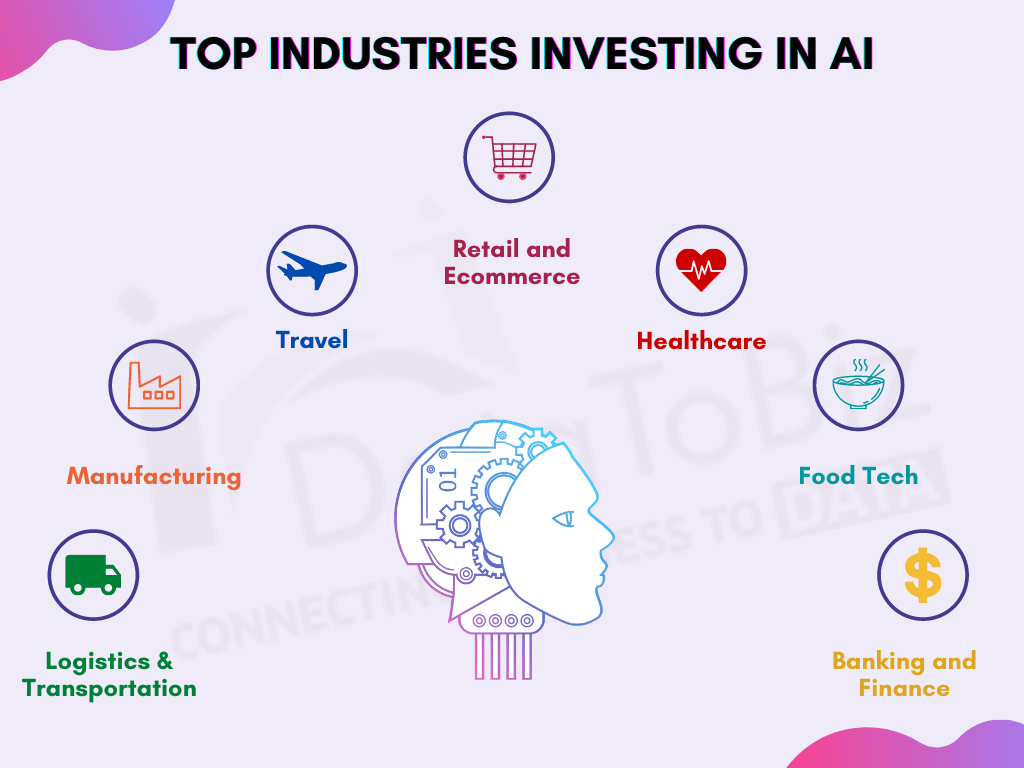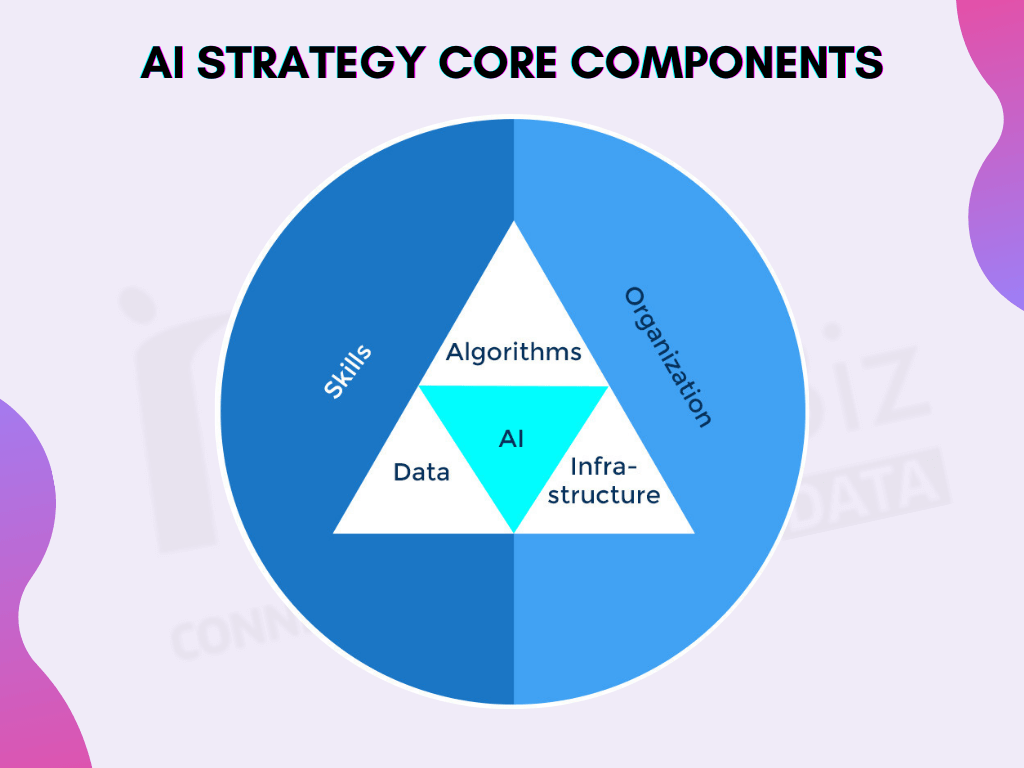Artificial intelligence has been seeing rapid growth during the last few years. More and more organizations from across the world are investing in AI and machine learning technologies. As per a report, the global market value of artificial intelligence is estimated to be $126 billion by 2025.
Be it marketing and sales, business intelligence, customer care, logistics, or the banking and financial sector, AI and Machine Learning hacks play a vital role in streamlining the business processes. Artificial intelligence is said to reach $22.6 billion in the fintech market by 2025, and it is said to touch $40.09 billion in the marketing market by the same year.
Many large-scale enterprises and smaller businesses alike are looking at AI and ML with anticipation. But not all of them have the necessary talent pool to implement and work with the updated systems. That’s where artificial intelligence consulting firms are stepping into the picture.
By providing customized services to these companies, the AI firms help the top management integrate the latest technology into their systems and train employees to work with AI tools. At the same time, some enterprises have failed to become successful by investing in artificial intelligence.
And we know that implementing AI and machine learning includes facing challenges related to organizational culture, skill gap, employee psychology, financial limitations, and data management, among other things. Also, the top management has to think of the existing business challenges such as reduced productivity, lengthy product cycles, delayed transportation, unhappy customers, fraudulent transactions, and much more.

Machine learning algorithms are dynamic in nature and capable of continuous improvement. Across various industries in the market, machine learning is being used predominantly in these ways to overcome business challenges.
Data Analytics is the process of collecting, sorting, and analyzing a vast amount of data to derive valuable insights. There is a lot of raw data scattered throughout the enterprise, and, not to mention, the real-time data that’s always available on the internet.
Continuously increasing data these days led to a new process called Data Cleaning. The AI solutions company now focuses on clean data along with big data. Data from the past may not always be relevant in today’s world. Using it for analysis and predictions for the future doesn’t make sense, right?
For example, businesses that use mobile eCommerce do not need data from the era where mobile phones were not used for shopping.
It further takes more time, money, and effort to sort and process unstructured data, arrive at what is essential, and then use it to generate predictive reports. AI can help you identify which data is relevant and which is not so that your team can work only on new and clean data to get better and accurate predictions.
Customer segmentation is the technique of classifying customers and target audiences into different sections based on similarities in their purchase behavior, product requirements, etc. Traditional procedures are time-consuming, and the margin for error is also high.
Machine learning consulting company uses data mining and ML algorithms to process data and segment customers into different categories. Instead of guessing or going by instinct, use data-driven marketing procedures to understand customers and target audiences. Data is already available in abundance in the form of email newsletters, website visitors, social media posts, and lead capturing information.
It will help to identify profitable customer segments and focus on catering to individual customer needs. By doing this, you can increase sales and customer satisfaction at the same time. However, you need to ensure that you have a proper business case before implementing ML for customer segmentation and customer lifetime value (LTV) prediction.
Demand forecasting is a crucial factor in the manufacturing industry. Producing more when the demand is less and producing less when the demand is more will result in losses for the enterprise.
Industries have been following traditional approaches to predicting how much they need to manufacture, how much stock has to be stored in the warehouses, and when it has to be moved to wholesalers and distributors, etc. so that the products will be available in the market for customers’ consumption at the right time.

But the forecasts have not always been accurate enough, isn’t it? Wouldn’t you want software that gives more than 90% accurate forecasts? An artificial intelligence consultant can create a robust demand forecasting system that analyses more data in less time. It can find the hidden patterns which the age-old methods ignore. And when data prediction is accurate, the decisions made based on the predictions will also be beneficial. Right?
Spam identification may not seem like a big deal when you say it. But when it comes to cybersecurity, this is one of the most important factors. Machine learning came into existence with spam filters in emails. The algorithm would detect emails that seemed dubious, suspicious, and fake.
While this is great for personal use, how does it help businesses? Proofpoint said that 88% of the firms from around the world experienced spear phishing in 2019. According to a report by IBM, it took around 207 days to identify a data breach in 2020.
AI services include creating a comprehensive security system that prevents cybercriminals from breaching the security walls and compromising confidential data.
Some of the leading antivirus software solutions use machine learning algorithms to identify different types of cybercrimes and protect employees from becoming victims. AI firms are also developing data security protocols to help SEMs and institutions add more security layers to the business systems.
And since most of these protocols are customized for each enterprise, the risk of being exposed to cybercriminals is reduced to a great extent.
eCommerce companies absolutely need to provide this service to their customers and target audiences. Amazon and eBay are the best examples of how machine learning algorithms suggest products to customers.
The recommendations are made based on purchase history, search records, page views, clicks, item views, browsing history of the device, location of the device, language used, and so on. These parameters are clubbed together to be termed behavioral data.
Personalized product recommendations bring more traffic to the website and increase the conversion rate. This means that the visitors are spending more time on the website and leaving as customers. Sales are being recorded, and products are being sold. Isn’t that what you want as a business owner?
So how is it done? How are your competitors using artificial intelligence solutions to attract more audiences to their eCommerce websites? As we mentioned above, the answer lies in machine learning algorithms designed to analyze and process customer behavioral data. AI has made it easier to bring more customers to the business.
While cybersecurity is one threat, fraudulent transactions are another. The two factors overlap to a certain extent where hackers and impersonators use customers’ information to make false claims and purchases.
But that’s not always the case. Real customers have also been known to indulge in fraudulent practices to gain an advantage. The insurance sector, the banking sector, and the eCommerce (online retail) sector see the most of these cases.
Fraud detection and prevention systems use machine learning algorithms to identify patterns and alert the teams even before a fraudulent transaction occurs. This helps save time and money for banks and financial institutions and also helps them keep their customers happy.
The aim of the artificial intelligence consulting firm is to help banks and retailers reduce chargebacks and disputes on transactions. Insurance companies can not only detect which claims are fake but also identify policyholders who are more likely to commit a fraudulent transaction using AI software.
Speech-to-Text is one prime example of using machine learning algorithms in communications. The speech pattern, dialect, intonation, and tone of every individual are different. Identifying the words, the speech patterns, etc is possible only by using AI software.
Similarly, image and video recognition are used by platforms like Facebook, Amazon, Shutterstock, etc., to recognize faces, people, locations, and other details. This data is used to provide better services to users. The videos are broken into individual image frames to capture data in each frame.
In today’s world, you can find rich data in abundance in the form of images and videos on social media.
The AI business consultant uses ML algorithms to help you process and analyze real-time data (images and videos) from the internet. The accuracy of AI tools is much higher than what humans can achieve without any aid from technology. And didn’t we already mention it is also faster?
Alexa and Siri have been our trusted virtual assistants for a while now. We use our smartphones and home assistant devices to search for information, place orders, make reservations, and more. What do we do at work then?
We use similar virtual assistants and chatbots to share data, set reminders, automate recurring tasks, and generate reports at work. Virtual assistants are used in IT departments, HR departments, marketing and Sales departments, etc., to help employees finish their work in less time, without compromising quality.
From recording our voice instructions to gathering the details we want and presenting them in a format of our choice, the VAs are efficient and capable, thanks to the machine learning algorithm that runs them.
From customer service to manufacturing to quality testing, various business processes can be automated. This saves time, money, and other resources for your business. Instead of asking your employees to do the same work every day, you and your teams can focus on building and expanding the firm across different markets.
Helpdesk solutions are popular and widely in use. Many organizations have improved their customer service by investing in AI helpdesk software to streamline the complaints and resolve them in a quick time.
AI strategy consulting services help you identify areas in your business that can be automated to reduce errors and maximize output. When employees become efficient and more productive, wouldn’t the enterprise become successful?

Known as sentiment analysis, it is a machine learning tool that helps you understand how a customer or a user perceives a product/ service. And the best part of this is that it is done without any human input.
You don’t need to conduct surveys or talk to customers. The tool will use real-time data to capture the emotions of the users rather than simply translate the meaning of individual words.
For example, if a customer wrote a sarcastic review for a product, the sentiment analysis tool can see through the sarcasm and identify that the text is not a recommendation and that it is a negative review. This is extremely useful in knowing the actual opinion of the users. You can use this data to make the necessary changes or find a way to satisfy the customer.
The main aim of investing in AI and MI solutions is to optimize the use of resources and reduce costs, improve productivity and efficiency, enhance user experience to have a happy customer base, and increase the return on investment.
Implementing AI and ML is not a one-time process. Businesses have to continuously change and adapt to the latest developments in the market. Unlike traditional systems, upgrading AI tools is simpler as the IT infrastructure is more flexible and scalable. Contact the leading artificial intelligence consulting firms to get an in-depth understanding of AI tools and processes.
